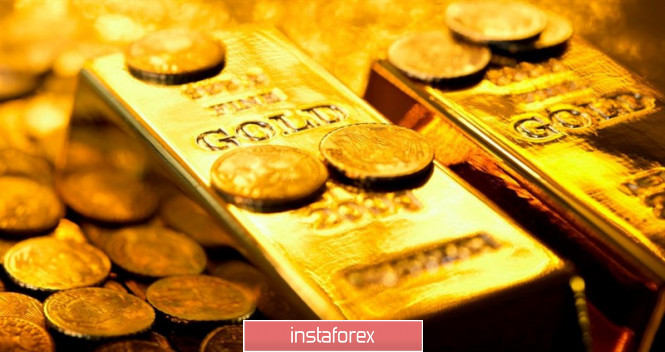
As a rule, yellow precious metals rapidly rise in price during periods of increased market volatility. One such case occurred last week, when a 1.5% drop in US stock indices was accompanied by a 1% jump in gold. However, the cost of precious metals often returns to about the same levels from where it began to grow, as soon as the markets begin to discharge after periods of heightened fears.
The status of a defensive asset implies the use of gold as a safe haven where investors can wait out the storm in the financial markets. At the same time, the precious metal reacts to the incoming information, sharply adding to the price on the same news about the escalation of trade tension and decreasing in response to an increase in the chances of a US-China trade deal.
Gold is now trading near $1,500 per ounce, that is, quotes, having clearly lost their craving for growth, returned to where they were two months ago. According to analysts, this partly deprives gold of the status of a safe haven asset, completely giving it to the power of market storms. However, precious metals have significantly increased in price since the beginning of the year, and this is only partially due to trade conflicts. Gold is also aided in growing by the change in the direction of the monetary policy of leading central banks, and this relationship already puts precious metals on one side with the stock markets.
Gold and the S&P 500 received an impressive boost for growth in June, when the Federal Reserve saw a reduction in interest rates. The easing of monetary policy increases the attractiveness of precious metals and stocks as opposed to debt markets, where rates in the summer reached multi-year lows.
Another source of long-term growth for gold is the acceleration of inflation, which is a consequence of the policy of lowering interest rates. Inflation is undermining the purchasing power of the US dollar, which plays in favor of precious metals and stocks.
It should be recalled that the large-scale rally of gold in recent years was associated not so much with the collapse of the markets of 2007–2008 as with the period of the end of 2008–2011. Then it became clear that the global financial system had survived, and the central banks managed to flood the "fire" with massive injections of liquidity. Precious metal has tripled in price over this time (to levels above $1,920). In the case of a repeat of this scenario, gold may well rise in price to $3,000 per ounce. However, the reverse side of this connection is the fact that precious metals are vulnerable to decline if global politicians are able to regain confidence in the markets. Then the issue of normalizing monetary policy may return to the agenda, and this could already result in a drop in quotations to the $1,300 area by the end of the first quarter of 2020.
Thus, gold is unlikely to be able to "sit out" in a narrow trading range, hiding behind the status of a safe haven asset.
The material has been provided by InstaForex Company - www.instaforex.com